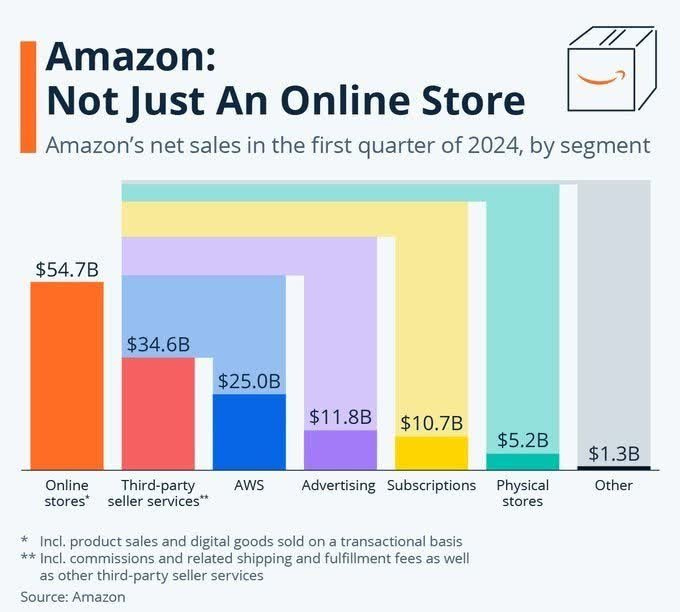Deconstructing a Compounder 💎
The ideal business to invest in
Amazon: The Ultimate Compounder
The most powerful wealth builder in the financial markets is to find and hold onto a compounder.
A compounder is a business that consistently generates high returns on capital and reinvests its earnings back into the business.
High return on capital + high reinvestment opportunities = Compounding
How do you find these companies?
It can be a challenge, but there are a few things to look for:
Sustainable competitive advantages
Long and consistent track record of outperformance
Large runway for growth and expansion
Profitable reinvestment opportunities
Outstanding management (Founder Jeff Bezos)
This article will deconstruct Amazon as a prime compounder (pun intended).
Amazon has compounded by 31.39% annually since its IPO in 1997 (!).
That is +170,433.93% of total returns ✅
Let’s dive in 👇
Why Amazon is a Compounder
Amazon was founded by Jeff Bezos in 1994 as Bezos predicted that the internet would be HUGE (Not everyone thought so at the time).
Amazon.com started as a bookstore, but Bezos’ aggressive reinvestment style quickly grew the company to billions in revenue.
Bezos did not only see opportunity in the book niche, he also saw it for almost any product you could think of.
Why should a consumer not be able to order it online instead of going to the store?
This strategy ended up with a TON of failures, here is a list of all the poor reinvestments Amazon made with its excess earnings:
Amazon made so many expensive mistakes - let’s take a look at their successes:
Is it not obvious? The large business segments we talk about today were once ideas generated inside of Amazon.
They were relentless at looking at their cost centers (sources of large expenses for Amazon) and finding a way to turn them into profit centers (“How can we do this better and sell it to others?”).
Amazon grew through its online store segment, but its largest wins have come from its innovative successes:
Amazon Web Services (+$90B market-leading cloud infrastructure service)
Third-Party Sellers (+$140B market leading 3rd party selling & distribution network through Amazon.com)
Advertisements (+$46B digital ads business growing faster than both Meta Platforms and Alphabet)
Subscriptions (+$40B through +200M loyal customers that pay an annual fee to get Amazon’s services)
Each of these segments was once an idea. These ideas have paid for all the failures many times over.
Here is a visual overview of Amazon’s business segments:







